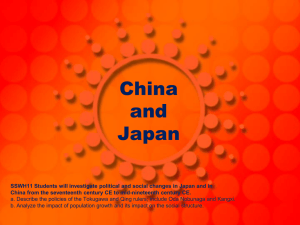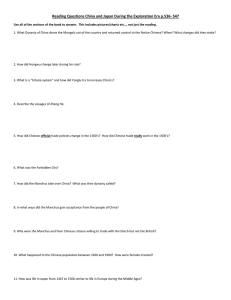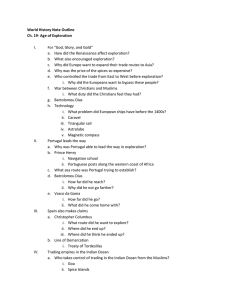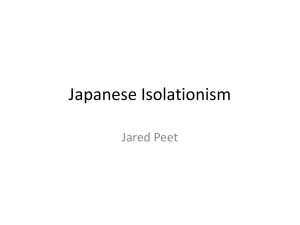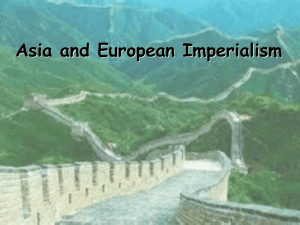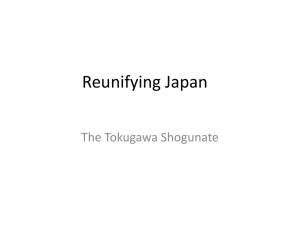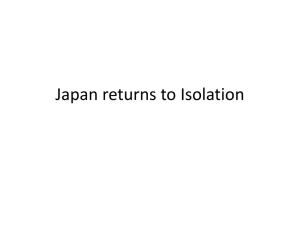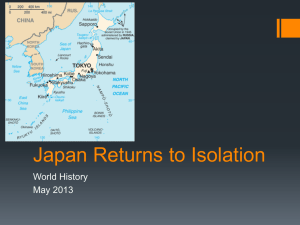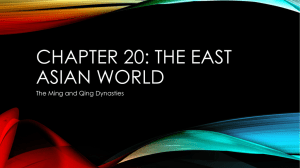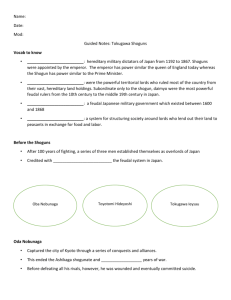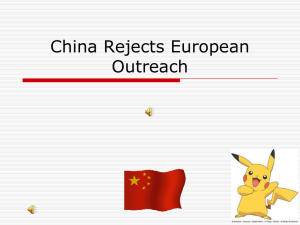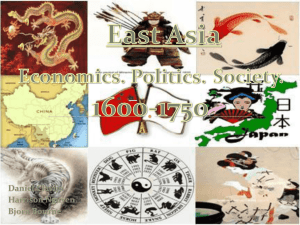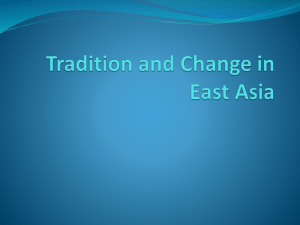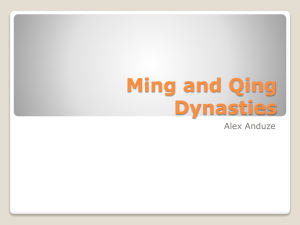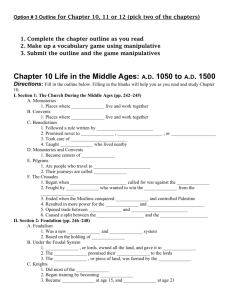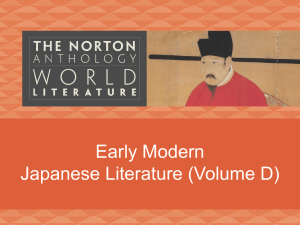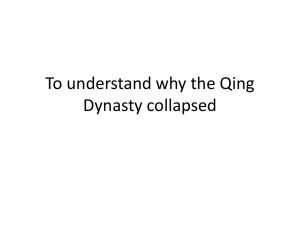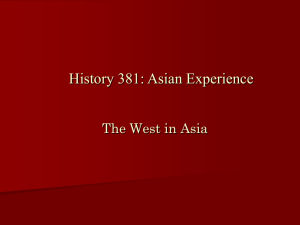Ch 19 - Mr. Zittle`s Classroom
advertisement
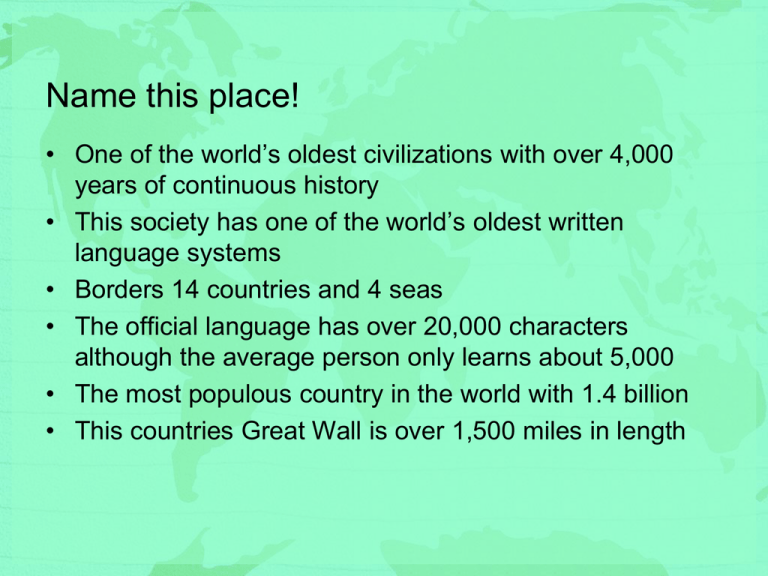
Name this place! • One of the world’s oldest civilizations with over 4,000 years of continuous history • This society has one of the world’s oldest written language systems • Borders 14 countries and 4 seas • The official language has over 20,000 characters although the average person only learns about 5,000 • The most populous country in the world with 1.4 billion • This countries Great Wall is over 1,500 miles in length Chapter 19.2 40a - describe the policies of the Tokugawa and Qing rulers, to include Oda Nobunaga and Kangxi (include how Oda Nobunaga laid the groundwork for Tokugawa rulers) 40b - analyze the impact of population growth and its impact on the social structure Essential Questions • Who were the late dynasties in China? • Why did they practice isolationism and how did this affect their society? • What is isolationism? The Ming Dynasty (1368 – 1644) • The first Ming Emperor, a peasant’s son Hongwu, drove out the Mongols in 1368 • Helped China return to health and prosperity • Reformer • • • Confucianism Land Agriculture • Ruthless ruler • Moved the capital to Beijing Manchus and the Qing Dynasty • The Manchus were a people from Northeast China (think Manchuria); not ethnically Chinese • The Manchus took a Chinese name for their dynasty – Qing Dynasty • Last dynasty in China • The Dutch won favorable status for trading by paying tribute and “kowtowing” Kangxi • Ruled for 60 years starting in 1661 • Reduced government expenses and lowered taxes • Put intellectuals into government positions; patron of the arts • What does patron mean? Review • Who were the people that took over China from the Ming Dynasty? • What was their name? • What was one contribution of Kangxi? Why? Get with a partner and write down two reasons why you think this population boom may have occurred. Life under the Qing • Food production increased, nutrition improved, and families expanded • Presided over a time of peace • Practiced isolationism with the outside world • Confucianism values agriculture over commerce/trade 3-2-1 • Here’s What: Describe one very important concept that you learned during this lesson. So What: How can you study/connect this concept so you will know that you understand/remember it? Now What: How can you use this concept to help you become a better social studies reader, writer, or problem solver? 19.3 • Essential Questions • What social, social, political, and economic changes occurred in Japan starting in the 17th Century? • Who were the leaders of this change and how did they facilitate it? What is this country? What does this pyramid represent? Get with a partner and let’s discuss for two minutes. Setting the stage • Civil war shattered Japans old feudal system • 1467 – 1568 is known as the Sengoku Period – “warring states” period • The Daimyo seized control and offered protection to peasants in return for their loyalty • The Emperor become only a “figurehead” • What do we mean by “figurehead?” Oda Nobunga • Powerful Daimyo – seized power from rivals and capital in Kyoto • Was still not able to unify Japan so he committed seppuku (ritual suicide) • “Rule Empire by force” • His successor was Toyotomi Hideyoshi • Hideyoshi unified most of Japan Tokugawa Shogunate unifies Japan • Tokugawa Ieysu successfully unified Japan in 1600 • Asked the Daimyo to spend every other year in the capital to prevent them from rebelling – alternate attendance policy!!!! • Moved capital to small fishing village called Edo… which would later become…. Take a guess… • Tokugawa Shogunate – dynasty that ruled Japan from 1603 – 1867 • Military government • Absolute Power Review • What is the name for the powerful lord equivalent to a European Noble? • Who seized power from rivals and capital but was unable to unify Japan? • Who successfully unified Japan and stated a dynasty/shogunate? Life in Tokugawa Japan • 200+ years of prosperity, peace, and isolation • Peasants and farmers faced most difficulties • More food produced – what does this do to population? Shogun • Social Structure Daimyo • New feudal structure Samurai Peasant/Artisans Merchant Class Culture • Haiku • 5 – 7 – 5 syllable, 3 line poetry Culture (continued) • Kabuki Theater – Actors in elaborate costumes perform skits about life Contact between Europe and Japan • Japanese first encountered Europeans in 1543 after a Portuguese ship shipwrecked on their coast • They began a trading relationship • Tokugawa Shoguns took steps to suppress Christianity • Instituted a “closed door policy” for more than 200 years Review • Describe a Haiku? • What is Kabuki Theater? • Why do you think the Japanese instituted a policy of isolationism? Summarize • Summarize what you learned today in ONE WORD!
